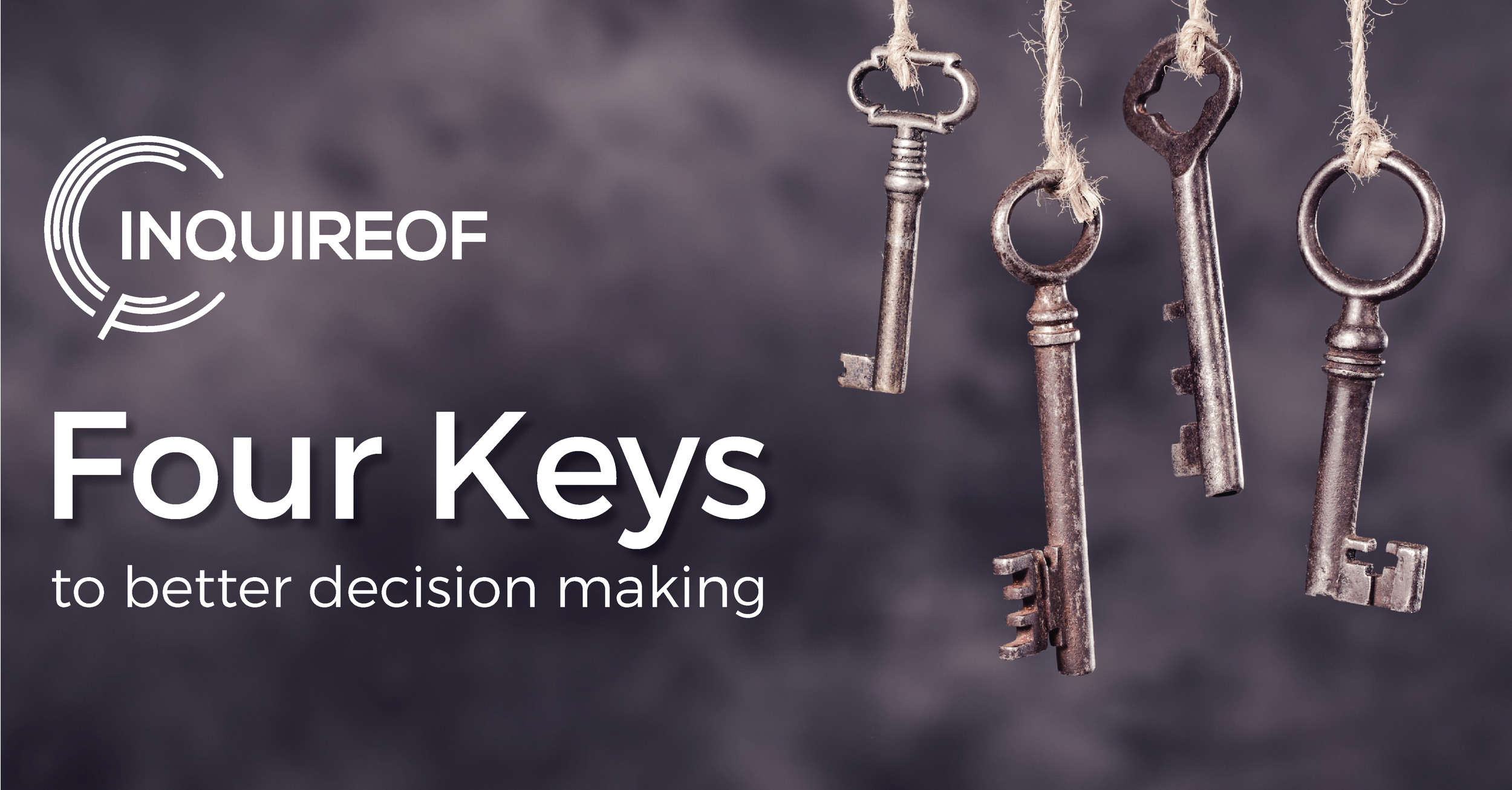
Private equity investors are in the business of making impactful decisions. Investment decisions carry a lot of weight, shaping people, profit, and productivity for years to come. With this in mind, who wouldn’t want to consider all strategies to enable the best decisions possible?
As a company building a platform dedicated to empowering better decision making, Michael Lewis’ The Undoing Project, is a source of great insight. This snippet of the book’s summary captures the essence well:
Israeli psychologists Daniel Kahneman and Amos Tversky... showed the ways in which the human mind erred, systematically, when forced to make judgments in uncertain situations. Their work created the field of behavioral economics, revolutionized Big Data studies, advanced evidence-based medicine, led to a new approach to government regulation, and made much of Michael Lewis’s own work possible. Kahneman and Tversky are more responsible than anybody for the powerful trend to mistrust human intuition and defer to algorithms.
The Undoing Project inspired further research into how people make decisions and how decision making can be improved. With stiff competition in the private equity space, the ability to improve M&A decision making is critical. Below are four key points to consider:
1. Trust Algorithms, Not Emotions
Despite our best intentions, unconscious bias is often at play in decision making. Whether predicting repeat criminal offenders or who will succeed as a senior executive, algorithms are a more reliable choice than independent human judgment.
Per Daniel Kahneman, “There are very few examples of people outperforming algorithms in making predictive judgments. So when there’s the possibility of using an algorithm, people should use it. We have the idea that it is very complicated to design an algorithm. An algorithm is a rule. You can just construct rules.”
2. Avoid A Narrow View
The framing effect is a cognitive bias which is influenced by how options are presented, either positive or negative. Problems and decisions, particularly large decisions like purchasing a company, should not be analyzed in isolation.
“The single best advice we have in framing is broad framing,” Kahneman states. “See the decision as a member of a class of decisions that you’ll probably have to take.”
When approaching a problem from a narrow perspective, you run the risk of missing the big picture. Taking a wider view when framing decisions combats the influence of either positive or negative presentation and allows for a holistic decision making strategy.
3. Be Aware of Risk Tolerance
Risk tolerance is another aspect to manage. While avoiding unnecessary risk is prudent, avoiding all risk can undermine a growth strategy.
Assess if and how all stakeholders involved in a transaction are prone to risk aversion, keeping particular focus on the target management team and key leaders. The lower their risk tolerance, the more likely they will take a contrarian stance in the deal process or post-acquisition.
4. Seek Out Good Advice
A key to gaining a broader perspective and triangulating a decision matrix is to drive inquisitiveness and to seek out guidance.
But what does an ideal advisor look like? “A person who likes you and doesn’t care about your feelings,” Kahneman writes. To put this another way, a good advisor is a genuine person who is not emotionally attached to the object of your decision.
How InquireOf Can Help
The InquireOf platform was built to help investors find and connect with seasoned industry operators and experts who have amazing experience, but no emotional connection to our clients’ deals. We have taken a technology-first approach, leveraging relevance algorithms to match investors with the right industry experts.
We firmly believe that dispassionate algorithms can do a better job of finding advisors than human opinion. The best part is that our machine learning models will stay opinionated and become more sophisticated over time.
Click here to learn more and get started building your own advisor bench.